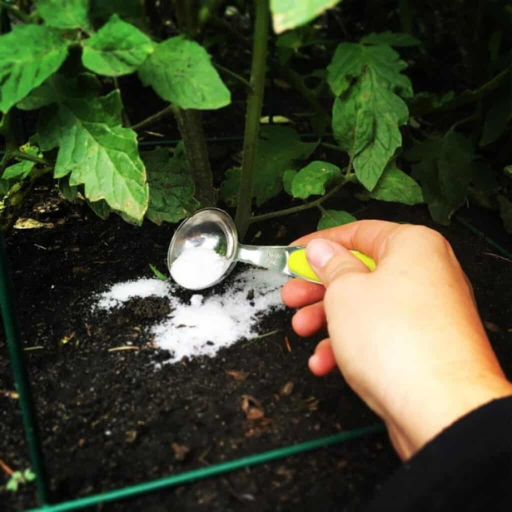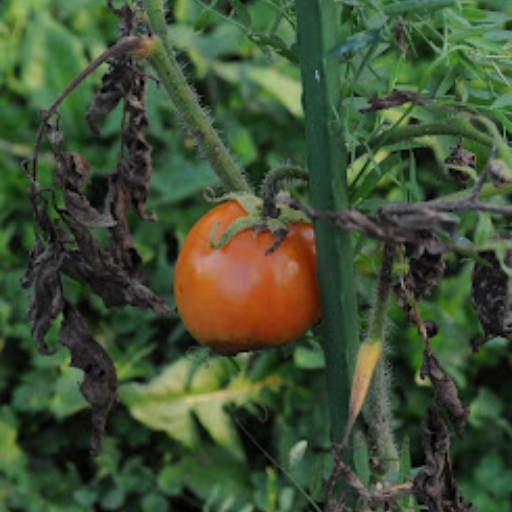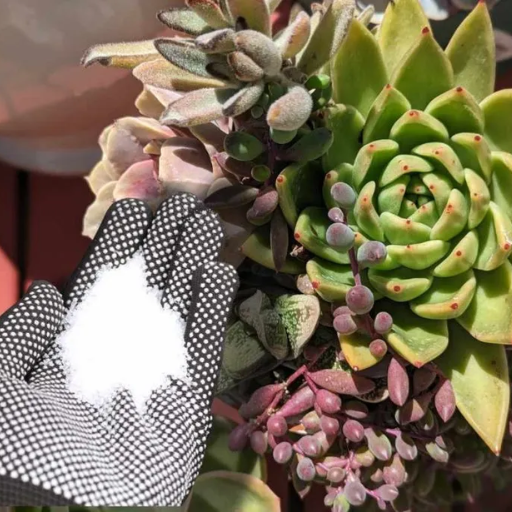Magnesium sulfate, commonly known as Epsom salt, is a beneficial natural product that can improve the growth of plants and their general condition. This comprehensive document will look into how Epsom salt can be applied in gardening, from soil enrichment to nutrient absorption. In this post, you will learn about the advantages of Epsom salts and how they assist in growing lush greenery, attractive flowers, and a robust root system. Whether you are an expert gardener or a beginner, there are some practical tips for utilizing Epsom salts properly in your gardening routine without compromising the well-being of other living creatures while ensuring a healthy plant life.
Why Should You Use Epsom Salt for Plants?

What Are Some of the Benefits of Epsom Salt?
Epsom salt offers many significant advantages for plants that can boost their growth and vigor. To begin with, it supplies magnesium, which is a vital nutrient in chlorophyll production that helps to promote healthy green leaves and photosynthesis. Moreover, using Epsom salts and other fertilizers can also enhance plants’ nutrient uptake. It also enhances flower blooming and fruit production by supporting plant health and growth. Furthermore, it makes up for the lack of magnesium, helping alleviate yellowing leaves – for example, in crops like tomatoes or peppers where this may be an issue. Mainly, applying Epsom salt within your gardening practices results in more resilient and vibrant flowers.
How Does Epsom Salt Help Tomato Plants?
There are several ways through which tomato plants benefit from using Epsom salt. It improves food through photosynthesis and ensures healthier, greener leaves for more muscular plant development (Herrick et al., 2014). Magnesium supports:
- Better Nutrient Uptake: Key nutrients such as nitrogen and phosphorus required for tomato plant growth also experience increased absorption when Epsom salts are used alongside them. This enables better plant development since there is a balanced availability of nutrients.
- More Flowering & Fruit Bearing: The availability of minerals such as magnesium, on the other hand, leads to flowering because it boosts more flowers, leading to more fruits, as per Sungwoo & Kim (2019). A balanced magnesium level can result in increased blossoms, hence high yields later on. Soil magnesium levels between 0.2% and 0.5% have been suggested as optimum values for vegetable crops, including tomatoes [18].
- Drought/Cold/Insect Resistance: By improving general health, Epsom salts help make tomato plants stronger against environmental stresses caused by droughts or pests.
- Correction of Deficiencies: When leaves on your plants are yellow or fruit formation is poor, Epsom salt may solve the symptoms by restoring magnesium, which is deficient in these cases.
To use Epsom salt effectively, dissolve about one tablespoon in a gallon of water and apply it to soil or as a foliar spray every four to six weeks during the growing season. This practice ensures that plants get enough magnesium and thus produce well.
Can Epsom Salt Enhance Soil Health?
Indeed, there are several ways in which Epsom salt can be helpful to the soil. I have used it regularly in my garden; I know it contains magnesium sulfate, improving nutrient availability and producing healthy plants. Additionally, Epsom salts help improve soil structure and drainage, improving root growth conditions. Whenever I add Epsom salt to my soil composition, I notice more resilience from my crops especially at difficult times. For this reason alone, including this element in our gardening has proven beneficial to soil vitality and plant life.
How Much Epsom Salt Should I Use on My Plants?

How Many Tbsps of Epsom Salt Per Gallon of Water?
When diluting Epsom salt for use on plants, I typically stick to a guideline of 1 tbsp. per gallon of water. This advice agrees with many reputable gardening sources. It is commonly agreed that this concentration is ideal for providing enough magnesium without over-saturating the soil, which may result in imbalances in nutrients.
Justification and Technical Parameters:
- Nutrient Delivery: Research shows that one tablespoon in a gallon improves soil magnesium levels and thus helps plants absorb more nutrients.
- Application Frequency: To avoid toxicity through over-application yet ensure constant magnesium availability, the mixture mentioned above should be maintained every four to six weeks throughout the growing season.
- Plant Variety Consideration: Some sources say that where some crops yield highly, more Epsom salt can be used if only they experience signs of deficiency, hence up to two tablespoons.
Adhering to these recommendations and adjusting based on plant response has improved plant health and growth considerably.
How Often Should You Apply Epsom Salt to Plants?
I apply Epsom salts around my plants every four to six weeks during the growing season. This timing comports with several gardening sites’ recommendations, which stress maintaining consistent magnesium availability while not drowning out other things from the ground. For example, when fruits are becoming heavier because they are nearing the ripening stage. However, applying epsom salts closer together, say every 3 or 4 weeks, will help address any early signs of deficiency far better than waiting longer than that would do. To ensure I don’t give them too much or too little, I observe my plants and adjust accordingly so they can get full benefits without an excessive accumulation of minerals.
Are There Risks of Using Too Much Epsom Salt?
However, according to my findings during research, despite the numerous benefits it can add to plants, overuse of Epsom salt is dangerous. This will lead to nutrient imbalances, particularly concerning key elements like calcium and potassium necessary for plant growth. I discovered that an excessive amount of this compound increases soil salinity levels,, which might affect water absorption in plants and disturb the beneficial organisms in the soil. To avoid these issues, I follow the recommended application guidelines and observe my crops closely for any harmful effects after that. In order not to damage them by giving too much fertilizer, it must be done in the right way.
How to Make Your Plant Food with Epsom Salt

Which ingredients should I use?
I usually gather essential components to produce my plant food using Epsom salt. Firstly, I use Epsom salt, which has a lot of magnesium and sulfur that plants need to grow strong. Then, I mix it with water – usually about one gallon, making it easier to mix and apply. Furthermore, sometimes, I can add some balanced liquid fertilizer so that my plants get various nutrients from this manure. According to various gardening literature, there is also advice on adding molasses as it contains trace minerals and sugar, which further benefits my crops. I can use these elements to prepare an efficient homemade plant food to maintain vibrant growth and vitality.
A Step-by-Step Guide on How To Make Plant Food
- Ingredients Gathering: Begin with Epsom salt (1-2 tbsp), one gallon of water, and other options, such as liquid fertilizer and molasses.
- Mix up the Epsom Salt: Place your Epsom salts in a container and pour one gallon of water over them. Stir until the solution is completely dissolved.
- Incorporate Optional Ingredients: If you use the balanced liquid fertilizer recommended in the packaging instructions, follow them while considering an extra tablespoon of molasses to strengthen the nutrient levels.
- Application: After mixing everything up, I take my watering can with its contents and pour the mixture onto my plants, ensuring that the soil thoroughly moistens every inch around each plant’s base.
- Frequency: I use this manure approximately every 4-6 weeks during the growing season, but I monitor my plants’ health accordingly.
This simple formula ensures that all necessary nutrients needed for better growth are accessible by plants.
How Should You Store Homemade Plant Food?
To store homemade plant food, put it in another clean, tight container, such as a glass or plastic jar, after transferring it from its current container. Therefore, labeling with the date and ingredients used in making the food is essential. I prefer keeping it in a cool, dark place away from direct sunlight and extreme temperatures, which helps preserve its efficiency. I also keep any leftover liquid fertilizer in another adequately sealed container. As a rule of thumb, I use stored plant food within one month for them to be best since nutrients lose their value over time. If there are any separations or strange smells, the mixture goes into the trash can so that only my plants get better diets.
When Is The Best Time to Use Epsom Salt in the Garden?

Should You Use Epsom Salt During the Growing Season?
I have found that using Epsom salt in my garden during the growing season can be advantageous. It is rich in magnesium and sulfur, which are necessary elements that stimulate plant growth, improve nutrient intake, and enhance the overall health of plants. In most cases, I will apply it when my plants show signs of nutrient deficiencies or want to intensify flowering and fruiting. Usually, this means adding a tablespoonful of epsom salts into water once every few weeks as part of my regular watering routine. This helps maintain the correct mix of nutrients and supports robust garden development throughout the year.
Is Epsom Salt Effective for the Whole Year Round?
Yes, I think Epsom salt works all year round, but its use may change depending on the seasons and the specific needs of my plants. For example, I limit the application of Epsom salt during dormant winter months as many plants do not actively grow, thus requiring reduced nutrients. But at the start of spring, when most plants begin to reawaken from slumber, it benefits healthy growth.
From the top gardening websites where I conducted my research, here are some technical parameters and recommendations:
- Magnesium Content: Epson salt consists of magnesium sulfate (magnesium), which is essential for photosynthesis for good leaf health and growth. Without magnesium, photosynthesis cannot occur, resulting in weaker plants. Magnesium is also required for chlorophyll production.
- Application Rate: In most cases, feeding a tablespoon per gallon will work for your plants. This avoids highly concentrated solutions containing salts that could be harmful to roots.
- Frequency of Use: It has been suggested that Epson’s salts be applied every 4-6 weeks during the growing season to promote flowering and fruiting, among other things. My frequency changes with feedback from the crops’ responses after applying them.
By varying my use of Epsom salt according to the seasons and my plants’ growth stages, I can ensure its effectiveness throughout the year.
How to Apply Epsom Salt to Different Types of Plants

Epsom Salt Usage in Vegetable Gardens
As regards my vegetable garden and applying Epsom salt, I adopted some top strategies from leading gardening resources. Usually, I start by mixing a gallon of water with one tablespoon of Epsom salt every time. This solution could be used for directly watering plants or as a foliar spray to improve nutrient uptake. After trying it on my crops over four to six weeks after they commence growing, it is evident that they become more bushy, yielding increased output, considering that adding magnesium enhances their fruiting ability, especially in vegetables such as tomatoes, peppers, and cucumbers. Furthermore, I have learned how to look at particular symptoms and react accordingly by providing minerals when needed.
Applying Epsom Salt to Potted Plants
When using Epsom salt on potted plants like orchids and succulents, among other plants that thrive well on magnesium, dilute one tablespoonful with a gallon full of water just like one does about the vegetables’ plot. Consequently, you can either pour this into the soil or leaves spraying so that nutrients in them can get absorbed quickly. In other instances, I use this precipitation regime every month, within which many beneficial mineral supplements are applied to different populations, like orchids and succulent flowers. Besides, depending on their growth patterns and requirements for nutrition supply, we may have upped or decreased application intervals or increased or diluted concentration levels during any given period of development stages; hence, there are no general rules about how much should be continuously applied throughout the year or when it may be wise to apply less than usual amount per watering session following an unusually dry week.
Special Considerations for Flowering Plants
Extra care must be taken when applying epsom salt to flowering plants if optimum results are to be realized. For instance, dampen roses with this solution at 1 tbsp/gallon in early bloom stages to enhance blooming and colorful petals. Therefore, I apply the solution monthly for the roses, hibiscus, or petunias, ensuring that the soil is thoroughly wetted through. Moreover, any signs of nutrient deprivation among the flowers indicate that there might have been erratic nursing; hence, it is necessary to adjust Epsom salt’ concentration accordingly if signs of nutrient starvation are observed. Such watchful monitoring measures would add to their aesthetic value and resilience, enhancing their performance within a garden.
Reference sources
Frequently Asked Questions (FAQs)
Q: What is a basic recipe for using Epsom salt on plants?
A: A basic recipe for using Epsom salt on plants involves dissolving two tablespoons of Epsom salt in a gallon of water. This solution can be used to water your plants to promote lush growth and improve nutrient absorption.
Q: How often should you add Epsom salt to your plants?
A: You can add Epsom salt to your plants once a month. This helps ensure they get a steady supply of magnesium and sulfur, essential nutrients for their growth.
Q: Is Epsom salt good for all types of plants?
A: Epsom salt can be used on various plants, but it is particularly beneficial for roses, tomatoes, and pepper plants. Always check specific needs for each type of plant to ensure optimum benefits.
Q: How should you apply Epsom salt to your garden soil?
A: You can apply Epsom salt directly to the garden soil by sprinkling one tablespoon per square foot. Mix it well into the soil before watering to help the plants absorb the nutrients better.
Q: Can Epsom salt help in preventing blossom end rot?
A: Yes, Epsom salt can help prevent blossom end rot, especially in tomatoes and peppers, by providing the plants with essential magnesium that aids in calcium absorption.
Q: Is a specific amount of Epsom salt recommended for young plants?
A: For young plants, you can start by adding one tablespoon of Epsom salt to a gallon of water and use this solution to water the plants. As they grow, you can adjust the dosage according to their needs.
Q: Can overuse of Epsom salt harm your plants?
A: Overuse of Epsom salt can lead to an imbalance of nutrients in the soil, potentially harming your plants. Always follow recommended amounts and observe how your plants respond to adjustments.
Q: What are some signs that your plants need Epsom salt?
A: Signs that your plants need Epsom salt include yellowing leaves, slower growth, and a general lack of vitality. These symptoms indicate a magnesium deficiency, which Epsom salt can help remedy.
Q: Does Epsom salt help plants grow bushier?
A: Yes, adding Epsom salt can help plants grow bushier by providing essential magnesium, which promotes chlorophyll production and improves overall plant health.
Q: How do you create a foliar spray with Epsom salt?
A: To create a foliar spray, dissolve two tablespoons of Epsom salt in a gallon of water. Spray this solution directly onto the leaves of the plants to encourage absorption through the foliage.







